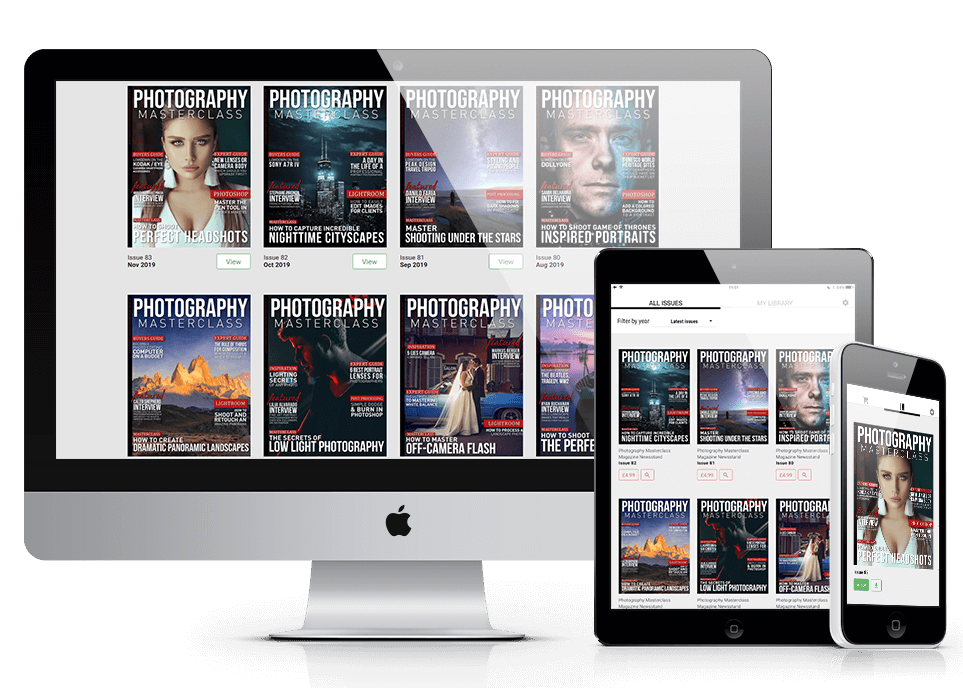What Camera Mode Should You Choose?
.png)
It’s essential to understand camera modes in order to control the exposure of your shots through ISO, aperture and shutter speed. So, it’s important to know what each camera mode does and when you should use it.
In this article, we’ll look at the main four modes, what they do and when to use them.
Program (P) Mode
Program mode is an automatic mode but, unlike Auto mode, you do have some control over your settings.
Program mode sets the aperture and shutter speed for you but allows you control over factors such as ISO, white balance, exposure compensation and flash exposure compensation. For this reason, it’s a much better option than full Auto as you retain some control.
Program mode is a great way for a beginner to start taking a little control over their camera. It helps photographers to learn about ISO and white balance and allows control over aperture with exposure compensation.
Program mode can also be useful when a great shot happens in front of you and you don’t have time to set your camera manually. Better to grab the shot than miss it entirely!
Whilst it’s a useful mode to start out with, photographers will quickly find it limiting as the camera is essentially only ‘guessing’ at the correct settings for any given situation.

Shutter Speed Priority (S or TV) Mode
Shutter speed priority is a semi-automatic mode, which sets the aperture for you but allows you to set the shutter speed (and all other settings such as ISO etc.).
Again, it’s a useful teaching mode that allows you to practice with your shutter speed, without worrying about getting your aperture right.
It’s also a great mode to use if you’re trying to photograph fast-moving objects with a fast shutter speed and don’t have time to worry about what the rest of your settings are doing.
Shutter speed is the most important factor when you’re shooting fast-moving objects or long exposures so if this is your goal then it’s the perfect mode to use to perfect these types of shots.
However, the downside of using shutter speed priority is that you have no control over the aperture that your camera chooses and, by extension, no control over the depth of field.
For example, if you’re shooting a long exposure on shutter speed priority then you’ll be using a slow shutter speed that won’t let much light into the camera. It’s therefore likely that your camera will compensate by using a large aperture and therefore a small depth of field. And, if you’re shooting a landscape then a small depth of field wouldn’t be the option that you want.

Aperture Priority (A or AV) mode
Aperture priority is another semi-automatic mode, which sets the shutter speed for you but allows you to set the aperture and your other settings.
Using aperture priority allows you to choose the right depth of field for the shooting situation you’re in.
So, for example, if you’re shooting a portrait you’ll want a smaller depth of field of around f4/f5.6 in order to blur the background. By using aperture priority mode, you can select this aperture and, as you’ll be letting in a large amount of light via the aperture, the camera should choose a viable shutter speed to work with. This can also save you a lot of time.
The downside, of course, is similar to using shutter speed priority mode. If there isn’t enough light coming into your camera via your chosen aperture, then you’re going to find that the camera chooses a slow shutter speed. And whilst this might be fine if you’re using a tripod it will prevent you from hand holding your camera and will limit your creative control.
Manual Mode – Master ISO Aperture Shutter Speed
When you shoot in a semi-manual mode, such as aperture priority, you only have control over that element.
This means that the camera chooses the other settings for you. Whilst this can be a good way to learn how to use individual aspects, it can lead to errors.
For instance, if you choose to shoot in aperture priority and use a small aperture to shoot a landscape, your camera could choose a shutter speed that is very slow – leading to camera shake if you don’t have a tripod.
By using manual mode, you have full control over your settings, meaning that you can pick a suitable aperture or shutter speed for your shooting requirements, and then adjust your other settings to suit.
Using manual mode allows you to take full control of the Exposure Triangle (ISO, shutter speed and aperture) and really explore the creative capabilities of your camera.
It also means that you can choose all the correct settings for whatever shooting situation you’re in. Manual mode is nearly always the best mode to use if you want to get the best out of your camera.
ISO Aperture Shutter Speed: In Conclusion
We hope that this article has provided you with the know-how to go out and be confident to experiment with and effectively use the different camera modes so you can take control over the elements (ISO Aperture Shutter Speed) that need to be balanced for perfect exposure.
Video: Which Camera Mode Should You Use? P, A, S, M, TV, AV
by Tony & Chelsea Northrup
Introducing PMM PRO
The only membership you need to grow your photography
Special Summer Deal... Our Biggest Sale For Photography Masterclass Magazine PRO
+ all the expertise you need in one place
+ step by step video lessons & comprehensive tutorials
+ curated photography for endless inspiration
+ Save 30% for life!
+ Unlock all magazine back issues (125+)
+ Access 3 premium guidebooks






